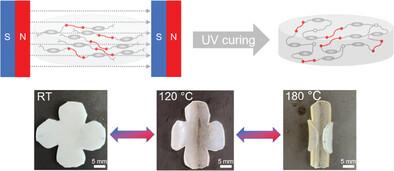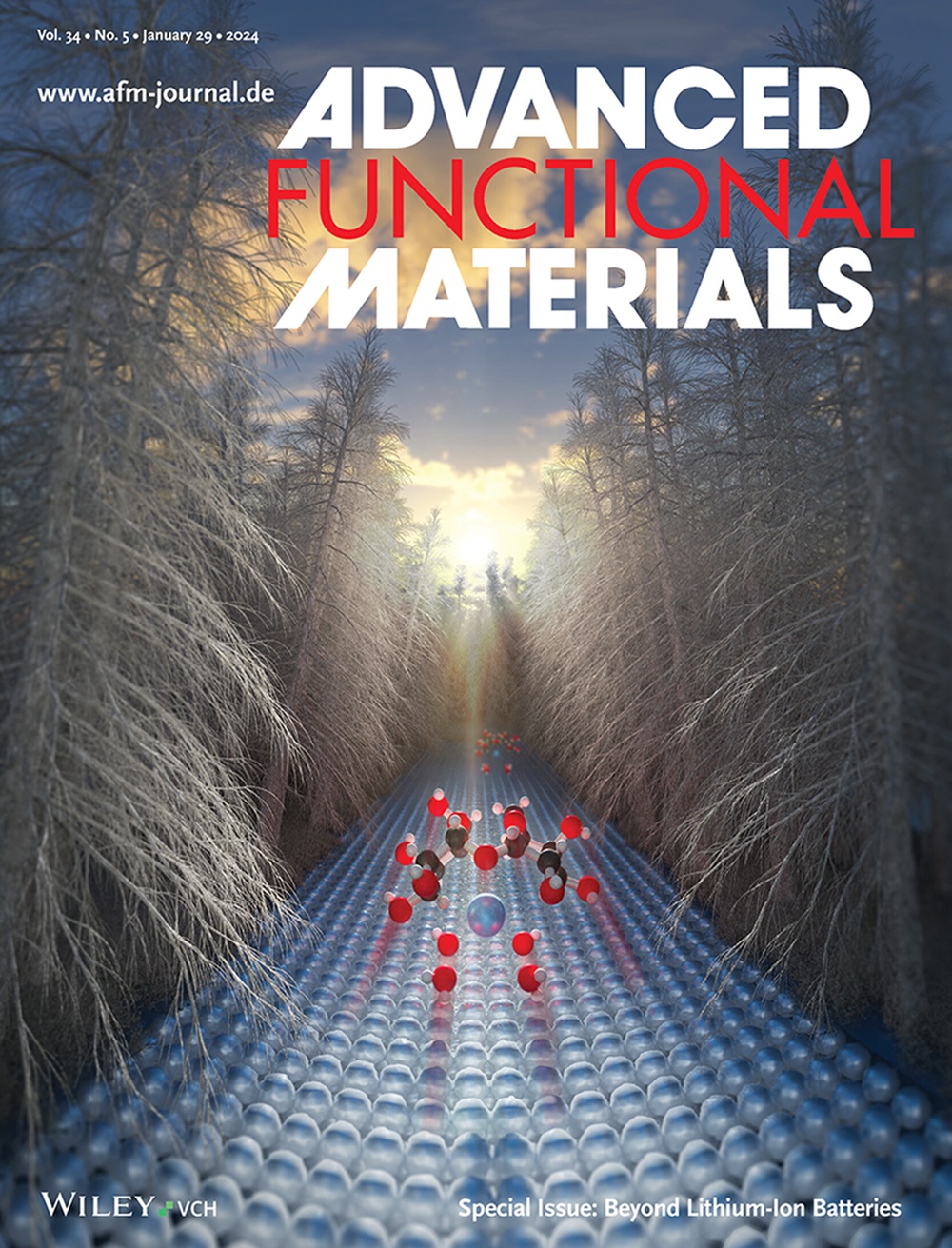Programmable Liquid Crystal Elastomers Via Magnetic Field Assisted Oligomerization
IF 18.5
1区 材料科学
Q1 CHEMISTRY, MULTIDISCIPLINARY
引用次数: 0
Abstract
Liquid crystal elastomers (LCEs) are highly promising soft actuators due to their ability to undergo significant, rapid, and programmable shape transformations. Achieving this actuation requires precise mesogen alignment before crosslinking. Magnetic field alignment offers an advantage over other techniques as it enables volumetric mesogen alignment. However, magnetic alignment has to be performed in the state where mesogens exhibit anisotropic diamagnetic properties suitable for alignment, typically in the nematic phase. Therefore, it is difficult to obtain a stable nematic liquid crystalline mixture before crosslinking, while preventing mesogen recrystallization. To address this challenge, a method using a magnetic field assisted thio-Michael polyaddition followed by the photo-crosslinking of liquid crystal oligomers (LCOs) is presented. This process is straightforward and allows the synthesis of magnetically aligned high molecular weight LCOs, which maintain a nematic phase before crosslinking. By applying different magnetic field orientations during the polyaddition, three distinct LCE networks are synthesized, each demonstrating unique reversible deformation behaviors, including radial contraction and expansion, thickness contraction, and bending. The potential of this approach is further demonstrated with LCE-based four-leaf clovers exhibiting selective and reversible large-angle bending deformation, despite the high thickness of the material. This simple approach should help researchers in various fields looking for a practical and versatile method for designing robust LCE actuators.

求助全文
约1分钟内获得全文
求助全文
来源期刊

Advanced Functional Materials
工程技术-材料科学:综合
CiteScore
29.50
自引率
4.20%
发文量
2086
审稿时长
2.1 months
期刊介绍:
Firmly established as a top-tier materials science journal, Advanced Functional Materials reports breakthrough research in all aspects of materials science, including nanotechnology, chemistry, physics, and biology every week.
Advanced Functional Materials is known for its rapid and fair peer review, quality content, and high impact, making it the first choice of the international materials science community.
 求助内容:
求助内容: 应助结果提醒方式:
应助结果提醒方式:


